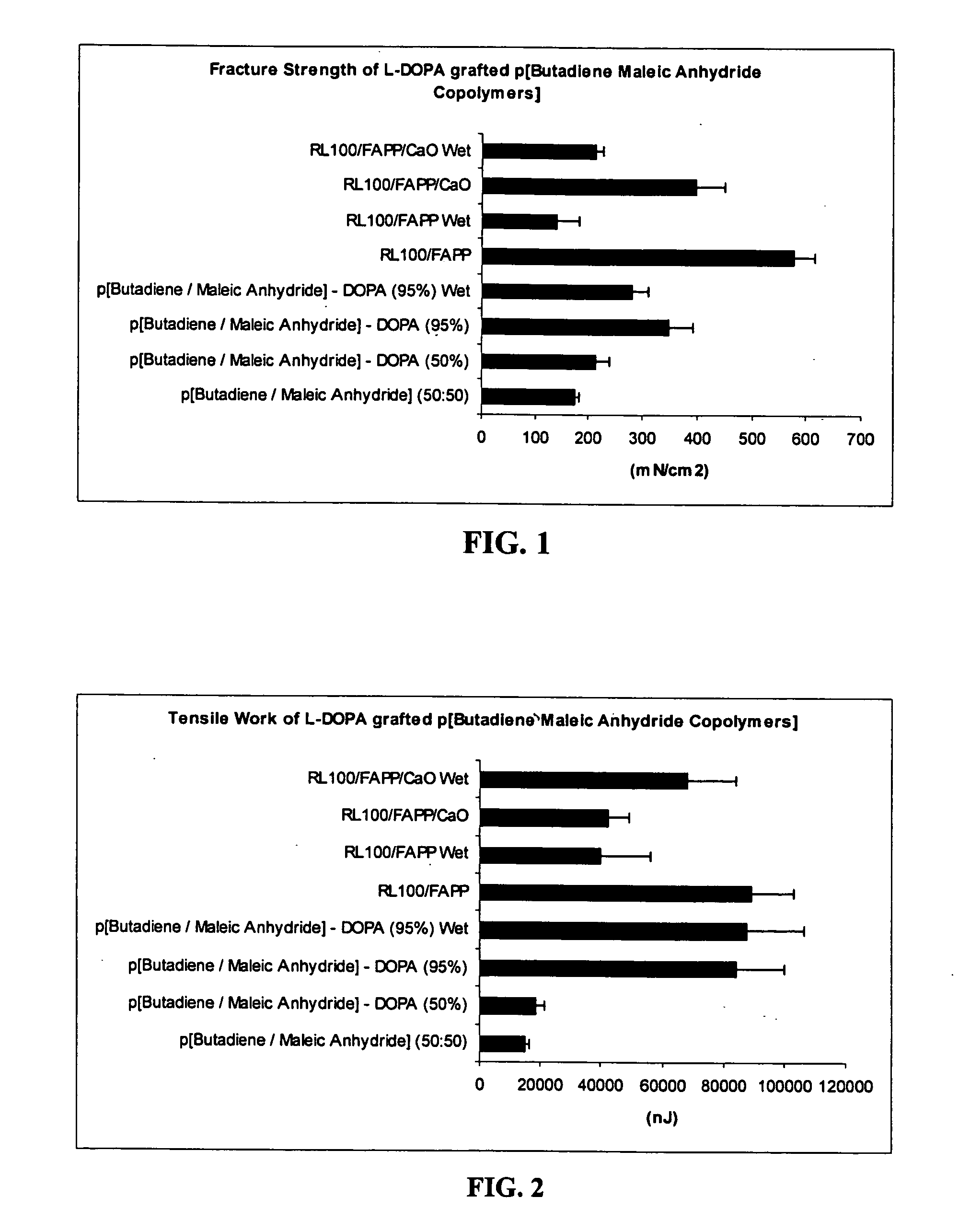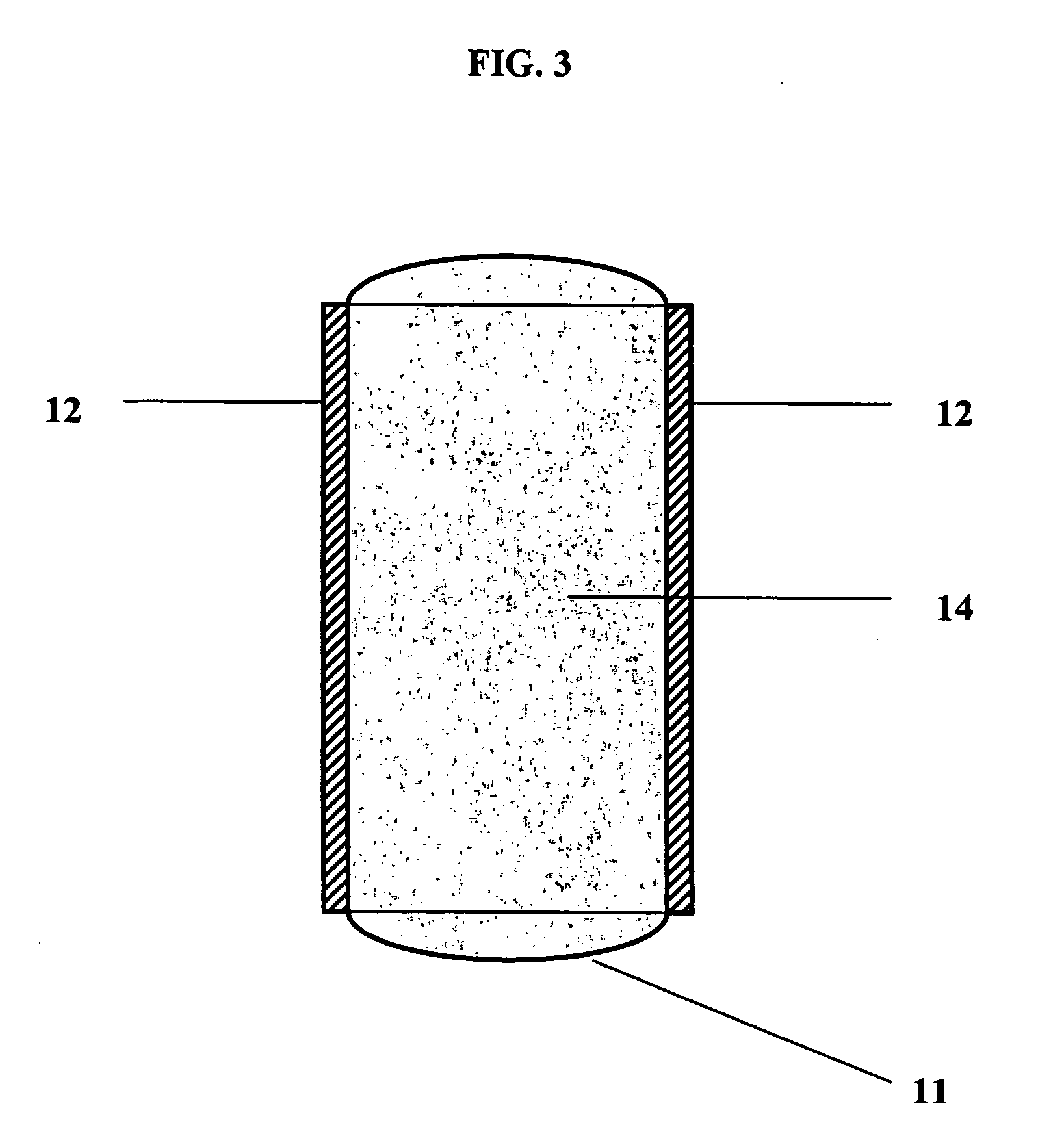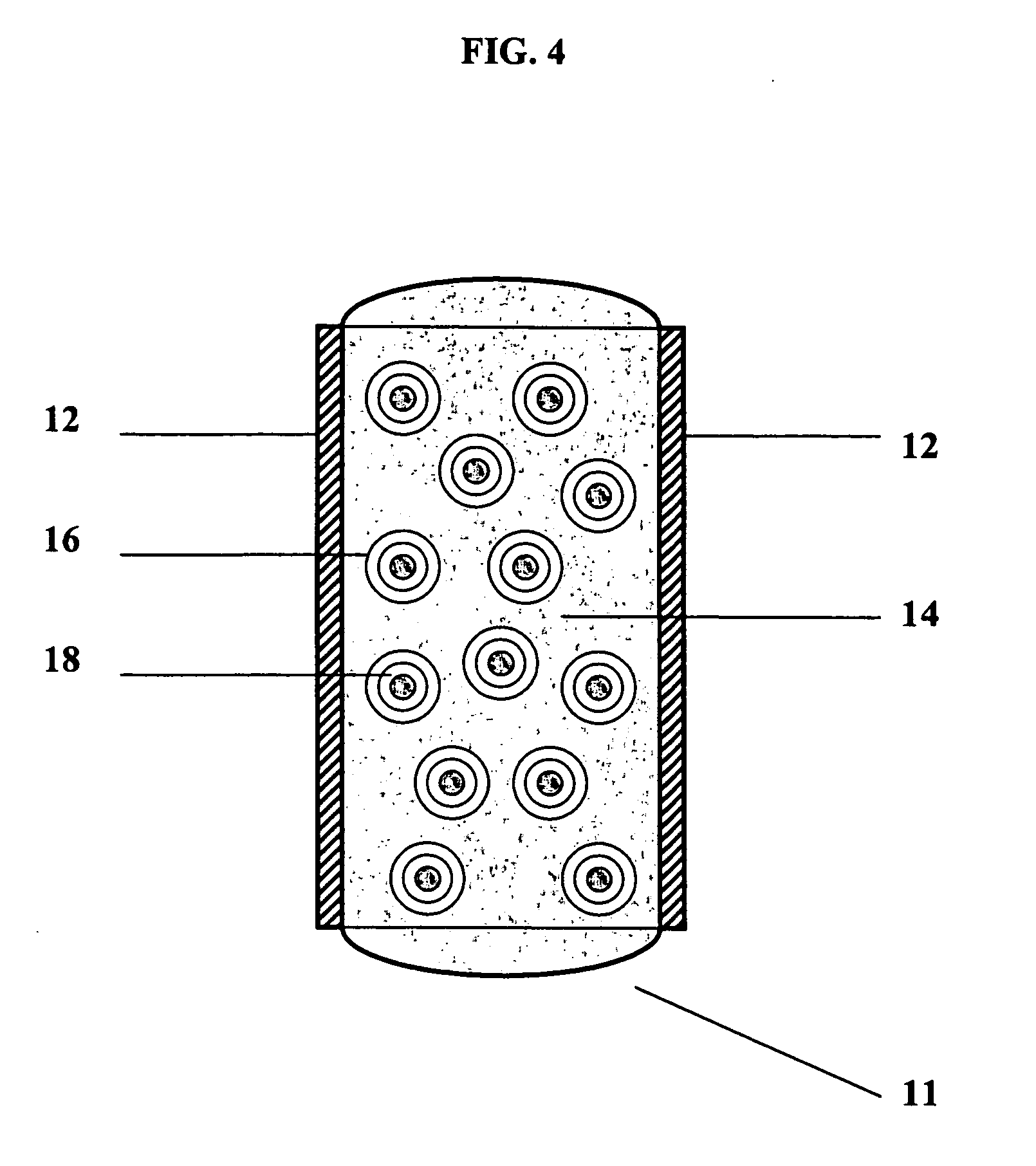Bioadhesive polymers with catechol functionality
a bioadhesive polymer and functional technology, applied in the direction of osmotic delivery, synthetic polymeric active ingredients, drug compositions, etc., can solve the problems of inability to extract these materials from organisms, reduce the effectiveness of enhancing drug delivery, and all the polymer adhesives tend to lose effectiveness, so as to improve the bioadhesive properties of polymers, improve the bioadhesive properties, and increase the residence time
- Summary
- Abstract
- Description
- Claims
- Application Information
AI Technical Summary
Benefits of technology
Problems solved by technology
Method used
Image
Examples
example 1
Comparison of Tensile properties for Maleic anhydride Copolymers with and without L-DOPA
[0102] Materials: Stock polymers were prepared in-house (anhydrides) or were purchased from standard commercial sources. Several different polymers containing maleic anhydride linkages were obtained from Polysciences (CAS #'s 25655-35-0, 9006-26-2, 25366-02-8, 9011-13-6, 24937-72-2). The repeating backbone group has a different structure in each of the four polymers tested, as shown (above) in Reaction 1. Four different backbone structures were used. These are the 1:1 random copolymers of maleic anhydride with ethylene, vinyl acetate, styrene, and butadiene. The variable portions of the backbone structures are designated as R groups shown at the bottom of Reaction 1.
[0103] Methods: The polymers were grafted with L-DOPA using the route shown schematically in Reaction 1. First, the polymers were dissolved in DMSO, and L-DOPA was added to the solution. The reaction was conducted by gentle heating ...
example 2
Fluoroscopy Study of Barium-Impregnated Trilayer Tablets with Bioadhesive Polymer Outer Layers
[0115] Method of Manufacture: Trilayer tablets were prepared by sequentially filling a 0.3287×0.8937 “00 capsule” die (Natoli Engineering) with 333 mg of L-DOPA-Butadiene maleic anhydride (Weight average molecular weight of about 15 kDa), where about 95% of the monomers were substituted with L-DOPA (also known as LDOPA-BMA or Spheromer III™ Bioadhesive polymer, Spherics, Inc.) to form a first outer layer, followed by 233 mg of a blend of hydroxypropylmethylcellulose (HPMC) with a viscosity of 4000 cps and 100 mg of barium sulfate to form the inner layer, followed by an outer layer of 333 mg of LDOPA-BMA. Trilayer tablets were prepared by direct compression at 2000 psi for 1 second using a Globepharma Manual Tablet Compaction Machine (MTCM-1).
[0116] Testing: The tablets were administered to female beagles that were fasted for 24 hours (fasted). The tablets were also dosed to fasted beagles...
example 3
Comparison of SPORANOX®, Spherazole™ IR and Spherazole™ CR Tablets
[0118] Spherazole™ IR is an immediate release formulation of itraconazole that has lower variability than the innovator product, SPORANOX®. The drug substance itraconazole is spray-dried with Spheromer I bioadhesive polymer to reduce drug particle size and blended with excipients including croscarmellose (superdisintegrant), talc (glidant), microcrystalline cellulose (binder / filler) and magnesium stearate (lubricant). The blend is dry granulated by slugging, to increase bulk density, and subsequently milled, sieved and compressed. The final product is a 900 mg oval tablet containing 100 mg of itraconazole, identical to the Sporonox dose. The composition of the tablet is 11% itraconazole; 14.8% Spheromer I; 11.1% HPMC 5 cps (E5), 2% Talc, 19.7% Cross-linked carboxymethylcellulose sodium (AcDiSOL), 1% Magnesium Stearate, and 40.3% Microcrystalline cellulose. When tested in the “fed” beagle model, the IR formulation has...
PUM
| Property | Measurement | Unit |
|---|---|---|
| Fraction | aaaaa | aaaaa |
| Fraction | aaaaa | aaaaa |
| Atomic weight | aaaaa | aaaaa |
Abstract
Description
Claims
Application Information
 Login to View More
Login to View More - R&D
- Intellectual Property
- Life Sciences
- Materials
- Tech Scout
- Unparalleled Data Quality
- Higher Quality Content
- 60% Fewer Hallucinations
Browse by: Latest US Patents, China's latest patents, Technical Efficacy Thesaurus, Application Domain, Technology Topic, Popular Technical Reports.
© 2025 PatSnap. All rights reserved.Legal|Privacy policy|Modern Slavery Act Transparency Statement|Sitemap|About US| Contact US: help@patsnap.com



